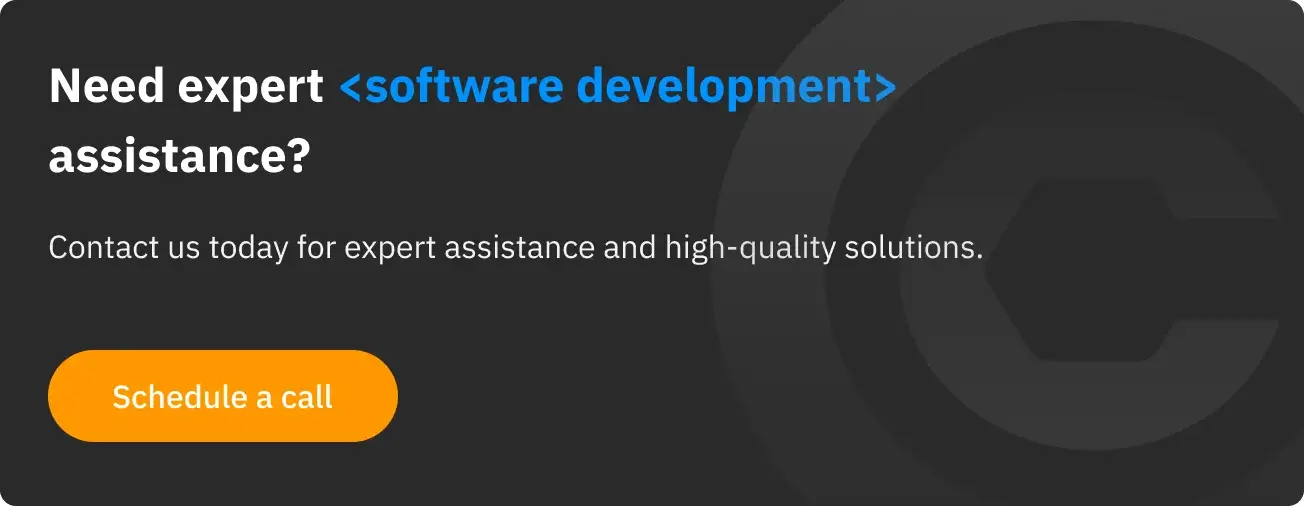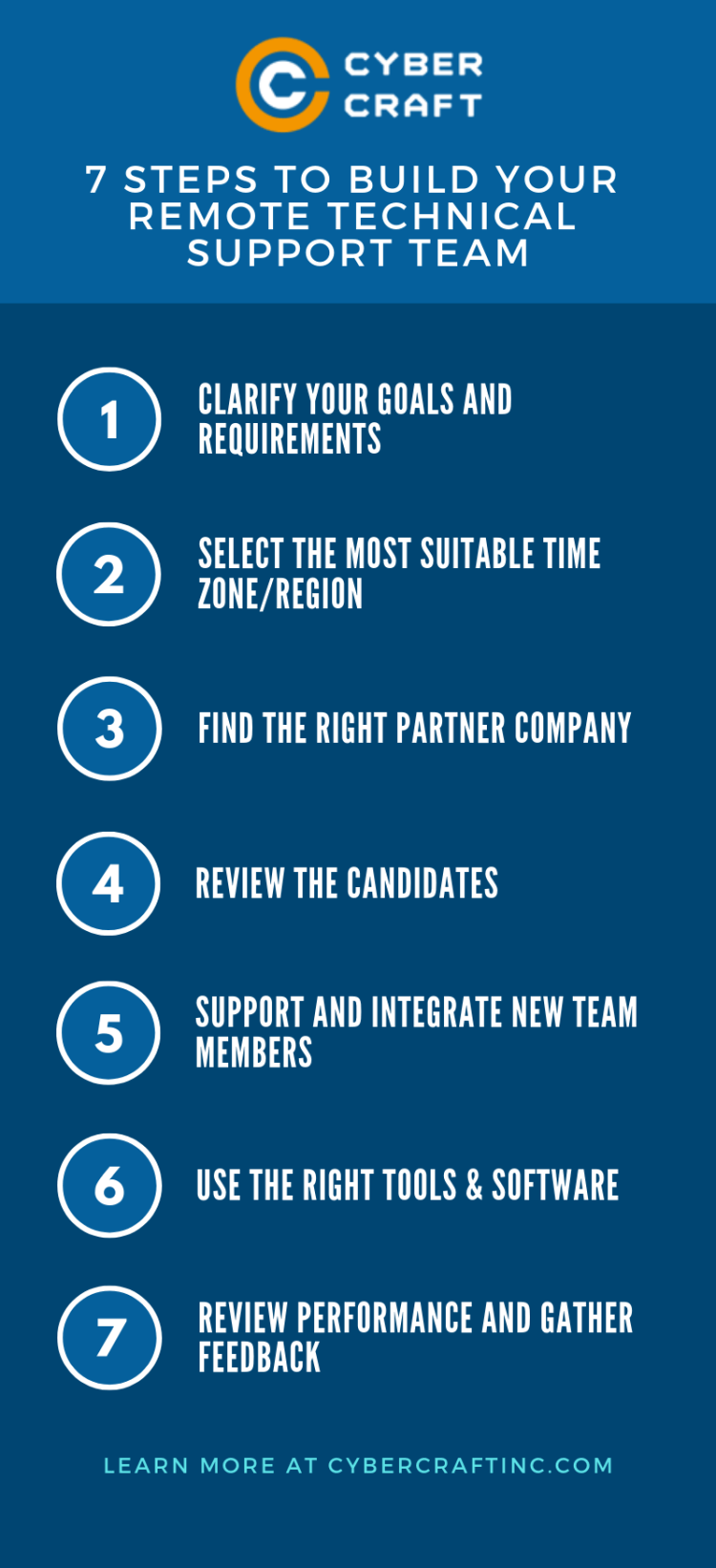Technical Support Team
If your company has a great product or service, you may think that business success is guaranteed. Unfortunately, this is not so. It doesn’t matter how great your products or services are if you fail to provide timely and excellent support to your customers. This is especially true if you are providing technology-related solutions.
Technical support and general support, in general, are essential parts of overall customer experience. For this reason, it is vital that you build and diligently manage your technical support team. And when it comes to this, a logical question arises – should you build an in-house team or a remote one?
Offshore Technical Support Services Advantages
More and more companies tend to prefer the latter option to traditional in-house centers. This is not surprising as remote teams offer numerous benefits which the former cannot. In particular:
- Cost Savings
- Flexibility
- Access to a wide pool of great talent
- The same or even better quality of support

Let’s review each of these advantages in detail.
Cost Savings
The most obvious and perhaps important advantage of using remote technical support services is significant cost savings. In almost all cases, companies enjoy cost savings when outsourcing technical support.
This is easy to explain as building and maintaining an in-house team in the US or UK is enormously expensive compared to overseas. The salaries, social security contributions, payroll taxes, and certain fixed expenses all add up to the high cost.
In the case with a remote team, these expenses are much lower and some of them are absent. For instance, if you’re going to outsource or outstaff your technical support then payroll taxes, employee benefits, and certain other expenses are not your responsibility – they are the responsibility of the technical support companies which provide dedicated teams to clients like you.
Therefore, using remote teams can provide you with significant cost savings especially if you’re using offshore technical support services of a trusted outstaffing company.
Flexibility
If your team is based in a single time zone then providing 24/7 support may prove difficult. However, if you have a widely distributed international remote-based team then this is not a problem at all.
It is also worth mentioning that you don’t necessarily have to go 100% remote. You can combine an in-house technical support center with a remote one. Your local team can serve customers during daytime in your local time zone while the remote team can provide assistance in the off hours.
Also, if there are any unexpected issues with your local office the remote team is not going to be affected. The bottom line is, completely switching to remote or just doing it partially can provide you with a lot of flexibility. There are many ways to work around it to make your team more flexible.
Access to a Wide Pool of Technical Support Specialists
The needed talent is not always accessible or abundant in your city or even country. In some cases, it’s hard to build a local team or because of a scarce talent pool. In comparison, the remote option provides you with access to a much wider talent pool.
It’s much easier to find the needed technical support specialist or technical support engineer remotely, especially when you’re searching for rare skills. Furthermore, outsourcing and outstaffing companies usually have a wide base of suitable candidates for your future team which makes the recruiting process quick and easy.
The Same or Even Better Quality of Technical Support
It’s a mistake to think that remote always implies worse quality. In many cases, you can expect the same or even better quality of assistance provided for less money. Talented specialists can be found in many other places besides the US. You don’t have to worry about risking and sacrificing quality for money.
We must emphasize, however, that everything depends on the company you select to work with. If you sign an agreement with a reliable company with a proven track record then there is nothing to worry about.
If you’re going to do all the recruiting and team building yourself then there is a higher risk of hiring the wrong people who may disrupt your service. Therefore, you’re not risking the quality if you approach the selection and hiring process diligently.
Having explored the major advantages of a remote technical support team, let’s proceed to the seven steps you must take to build such a team quickly and easily.

7 Steps to Launch Your Remote IT Technical Support Team
Building a team is a process, not a journey. Every process must have a clear action algorithm. That’s exactly what we have prepared for you below. Here are the seven mandatory steps you must take:
- Clarify your goals and requirements
- Select the most suitable time zone/region
- Find the right partner company in that region and sign an agreement with them
- Review the candidates
- Support and integrate new team members
- Use the right tools & software
- Review performance and gather feedback

Let’s see in detail how to go about completing each of the steps.
Clarify Your Goals and Requirements
Before beginning the search process, the first thing you must do is to clearly understand why you need a remote team in the first place. What are your goals, what are you trying to achieve? It is to reduce product support & maintenance costs? Or perhaps you want to provide 24/7 assistance to multiple time zones and so there’s a need for remote specialists?
Whatever that is clarify your vision and objectives. Based on them you will be able to proceed and make the rest of the decisions required for the following steps. Knowing your goals and having clear expectations you must then make a list of requirements for the team. How big do you want it to be? What are the specific skills and experience you are looking for in candidates? What personal qualities must they possess? All of these questions must be answered before you move on to the next step which is to…
Select the Most Suitable Time Zone and Region
What region and time zone is best for you depends on the goals you’ve set as we have already said. We can generally say that you want to deal only with a time zone which can provide assistance when your customers need it. Secondly, that time zone and region must provide the qualified specialists you need.
Thirdly, it must be convenient to communicate with your remote team – the importance of a suitable time zone once again comes into play. Another factor required for stress-free communication is fluency in the language you or your customers speak. For this reason, you want to ensure that your team speaks the required languages fluently. It’s a good idea to check corresponding certifications which confirm their level of fluency.
Find the Right Partner Company
If you think that you have to do all the recruiting work yourself we have great news – you don’t. Fortunately, there exist decent IT technical support companies which do all that hard work for their clients. They search and find the best candidates, conduct interviews if necessary, build dedicated teams, integrate them into clients’ companies and provide continuous assistance.
These are top technical support companies companies such as CyberCraft which provide offshore technical support services. It’s always a much better option to use their services for building a remote center than doing all the hard work yourself.
Review Candidates for Remote Technical Support
Provided that you signed an agreement with an outstaffing firm to have them build a dedicated team for you, they are going to give you a pool of the best candidates whom you have to review. Among those candidates, you have to select those whom you consider the most deserving to join your team.
We have to go back to the first step – the list of skills and qualifications which the ideal candidates must possess. In the first step, you had to create a whole checklist of skills, experience and personal qualities which you are going to use in this step when reviewing candidates.
As a side note, the key personal qualities which we recommend you look for are the following: being a good self-manager, politeness, integrity, and discipline. Finally, once you have done your selection, the next step is to…
Integrate and Support New Team Members
When new people join your team they have to go through a special integration period which should include the necessary training and team building activities. You must establish clear policies and processes for how people do their work and train your team to follow them correctly. It is also necessary to set up convenient communication and reporting procedures. Doing this will require using the right tools and software which we will describe in the next step.
Use the Right Tools & Software
An efficient and effective team cannot function without the right tools. There are literally millions of great solutions out there. Which ones are right for you depends on the channels you use, the structure of your team, the reporting and communication procedures you have set up and other factors. To give general advice, we can recommend the following options: Freshdesk, Slack, Zendesk, Skype, Salesforce, Zoho Desk, Live Agent.
Review Performance and Gather Feedback
Once you have successfully conducted the integration process, you must continue providing assistance and begin carefully monitoring the performance of your employees. You have to set up clear KPIs (key performance indicators) to measure the results of your team. The most common indicators for a technical support team are average reply time, ticket backlog number, customer satisfaction score, etc.
Besides careful performance monitoring, it’s also a good idea to gather regular feedback from your team to measure how satisfied they are with their jobs, identify any issues and discover new ways to improve the work process.
Remote Technical Support - Conclusion

Hiring a remote technical support team does not have to be difficult if you know what steps to follow. Today we have provided you with a detailed step-by-step blueprint for building your remote technical support team quickly and easily. Now it’s your turn to apply what you’ve learned in practice!

